Pressure is mounting on the supply of metals needed to make renewable energy and electric vehicles as countries race to be carbon neutral by 2050.
In recent months, Britain has signed a deal with Zambia, Japan has partnered with Namibia, and the EU has joined forces with Chile. EU negotiators have also begun working with Congo, while the US has looked to Mongolia. These efforts share the goal of sourcing minerals needed for decarbonization, or “green” metals.
There are three groups of “green” metals that are widely used across many industries: aluminum and steel are used to make solar panels and turbines, while copper is important for everything from cables to cars. The group used in electric vehicle batteries includes cobalt, lithium and nickel, which make up the cathode, and graphite, which is the main component of the anode. The last group is magnetic rare earths such as neodymium, which are used in electric vehicle motors and turbine generators, but are in limited demand.
According to the Energy Transitions Commission (ETC), 72 countries, accounting for four-fifths of global emissions, have committed to carbon neutrality by 2050. To achieve the target, wind power capacity must increase 15 times, solar power 25 times, the scale of grid infrastructure must increase 3 times, and the number of electric vehicles must increase 60 times.
By 2030, demand for copper and nickel could increase by 50 to 70 percent, cobalt and neodymium by 150 percent, and graphite and lithium by six to seven times. In total, a carbon-neutral world by 2050 will require 35 million tons of “green metals” a year, according to the International Energy Agency. If you include the traditional metals needed for the process, such as aluminum and steel, the demand between now and then is 6.5 billion tons.
That’s why countries are worried about a global shortage of minerals by the end of the decade. By 2030, ETC expects a shortage of about 10-15% for copper and nickel; 30-45% for other metals used in batteries.
So what about the supply of these metals? Steel will probably remain plentiful. Cobalt is also plentiful. But according to experts’ predictions reported by the Economist , copper will be short by 2-4 million tonnes, or 6-15% of potential demand, by 2030. Lithium will be short by 50,000-100,000 tonnes, or 2-4% of demand. Nickel and graphite are theoretically abundant but require high purity for batteries. There are too few smelters to refine bauxite into aluminium. And hardly anyone produces neodymium outside China.
The Economist points to three solutions to these challenges. First, producers could tap more supply from existing mines, which could be done immediately but would have a limited capacity. Second, companies could open new mines, which would solve the problem entirely but would take time.
These limitations make the third solution the most important, at least in the next decade. That is, finding ways to unblock “green bottlenecks.” These include reusing more materials, which is most feasible for aluminum, copper, and nickel. The recycling industry is still fragmented and could grow if prices were higher. There are already some efforts, such as mining giant HP’s funding of a nickel recycling startup in Tanzania.
Huw McKay, HP’s chief economist, estimates that scrap could account for 50% of total copper supply within a decade, up from 35% today. Rio Tinto is also investing in aluminum recycling centers. Last year, battery-metal recycling startups raised a record $500 million.
The bigger way is to restart idle mines, with aluminium the most promising. Since December 2021, soaring energy costs have shut 1.4 million tonnes of annual aluminium smelting capacity (2% of the world’s) in Europe. A 25% increase in aluminium prices would attract more mines to reopen, according to Graeme Train, chief metals and minerals analyst at commodity trader Trafigura.
And the biggest hope lies in technologies that make the most of scarce supplies. Companies are developing processes called “tail leaching,” which extract copper from ores with low metal content. Using the technology on a large scale could produce an additional million tons of copper a year at little cost, according to Daniel Malchuk, a board member of US resource technology company Jetti Resources.
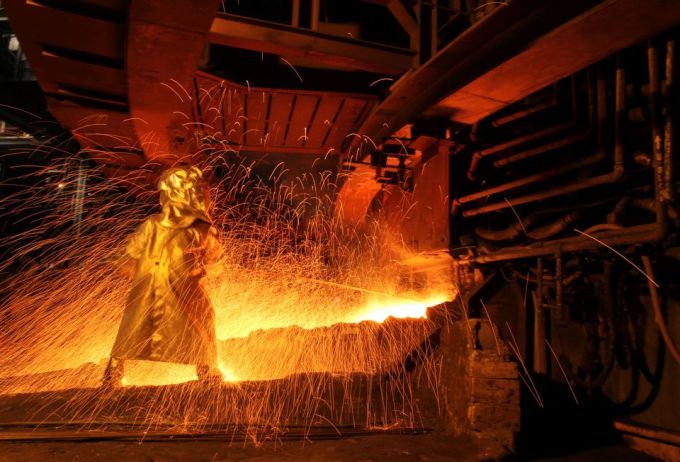
A worker works at a nickel processing plant in South Sulawesi province, Indonesia. Photo: Reuters
In Indonesia, the world’s largest nickel producer, miners are using a process called “high-pressure acid leaching” to turn low-grade ore into a material suitable for electric cars. Three multibillion-dollar plants have been built and additional projects worth nearly $20 billion have been announced.
Daria Efanova, head of research at UK financial firm Sucden, calculates that Indonesia could produce around 400,000 tonnes of high-grade nickel by 2030, partially filling an expected supply gap of 900,000 tonnes.
But new technologies are still uncertain and can have drawbacks such as pollution. So opening new mines will bring greater profits, even if it takes time. There are 382 cobalt, copper, lithium and nickel projects around the world that have started at least pre-feasibility studies. If they are operational by 2030, they could balance demand, according to consulting firm McKinsey.
There are currently about 500 active cobalt, copper, lithium and nickel mines worldwide. Getting the 382 new mines up and running by the deadline will require overcoming a number of hurdles. First is the lack of money. According to McKinsey, to fill the supply gap by 2030, annual capital expenditures on mining will need to double to $300 billion.
Consulting firm CRU estimates that spending on copper alone will reach $22 billion by 2027, up from an average of $15 billion between 2016 and 2021. Investment by major miners is increasing, but not fast enough. In addition, new mines take a long time to develop, with four to seven years for lithium and an average of 17 years for copper. The delay could be longer because of the paucity of permits.
As activists, governments and regulators increasingly block projects on environmental grounds, it took an average of 311 days between 2017 and 2021 for new mines in Chile to be approved, compared with 139 days between 2002 and 2006.
The metal content of copper ore mined in more favorable countries is falling, forcing companies to look to harsher locations. Two-thirds of new supply expected by 2030 will be in countries ranked in the bottom 50 on the World Bank’s “ease of doing business” index.
All this means that new supply can only be a long-term solution. So much of the adjustment over the next decade will come from saving on inputs. But how much of that will be difficult to predict, as it will depend on the ability of manufacturing companies to innovate.
Electric car and battery manufacturers, for example, have made strides using less metal. A typical electric car battery now contains just 69 kg of copper, down from 80 kg in 2020. Simon Morris, CRU’s Head of Base Metals, calculates that the next generation of batteries could require just 21-50 kg, saving up to 2 million tonnes of copper per year by 2035. Lithium demand in batteries could also be halved by 2027.
Besides savings, there are alternatives. In battery cathodes, nickel-manganese-cobalt chemistries that contain equal amounts of cobalt and nickel, known as NMC 111, are being phased out in favor of NMC 721 and 811, which contain more nickel but less cobalt. Meanwhile, cheaper but less energy-hungry lithium-iron phosphate (LFP) blends are popular in China, where city dwellers don’t need long driving ranges on a single charge.
Graphite anodes are also being doped with silicon (which is abundant). Tesla says it will build motors without rare earths. Sodium-ion batteries that replace lithium with sodium (the sixth most abundant element on earth) may be successful.
Consumer preferences will also play a role. Today, people want their electric cars to go 600 kilometers on a single charge, but few people regularly make such long trips. With lithium scarce, automakers could design cars with shorter ranges and swappable batteries, which would dramatically reduce the size of the battery. At the right price, adoption could be rapid.
The main challenge is copper, which is not easy to remove from the grid. But changing consumer behavior could help. CRU estimates that copper demand for “green” purposes will rise from 7% today to 21% by 2030. As metal prices rise, sales of phones and washing machines—which also contain copper—could decline sooner than power cables and solar panels, especially if the green technology market is subsidized by governments.
By the late 2030s, there may be enough new mines and recycling capacity to make the green transition work as planned. But the risk lies in other disruptions, according to the Economist .
Because supply is concentrated in a few countries, local unrest, geopolitical conflicts or even bad weather can have an impact. A miners’ strike in Peru or three months of drought in Indonesia could impact prices or reduce copper and nickel supplies by 5-15%, according to simulations by Liberum Capital (UK). But with resilient buyers, strong governments and a little luck, rising demand for the “green” metals may not cause catastrophic crashes.
Phien An ( according to The Economist )
Source link



![[Photo] Vietnam and Sri Lanka sign cooperation agreements in many important fields](https://vphoto.vietnam.vn/thumb/1200x675/vietnam/resource/IMAGE/2025/5/5/9d5c9d2cb45e413c91a4b4067947b8c8)











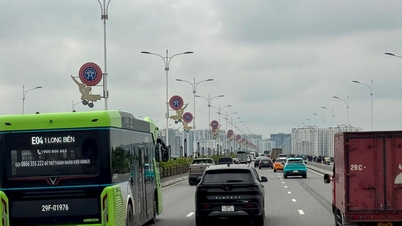






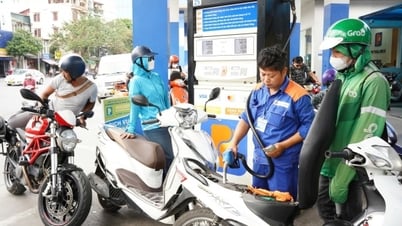











![[Photo] President Luong Cuong and Sri Lankan President Anura Kumara Dissanayaka visit President Ho Chi Minh relic site](https://vphoto.vietnam.vn/thumb/1200x675/vietnam/resource/IMAGE/2025/5/5/0ff75a6ffec545cf8f9538e2c1f7f87a)




























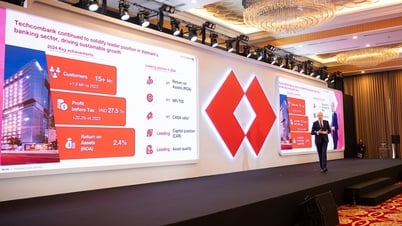


![[Photo] President Luong Cuong presided over the welcoming ceremony and held talks with Sri Lankan President Anura Kumara Dissanayaka](https://vphoto.vietnam.vn/thumb/402x226/vietnam/resource/IMAGE/2025/5/5/351b51d72a67458dbd73485caefb7dfb)

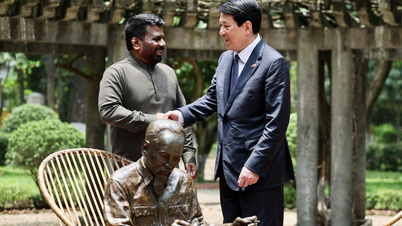






























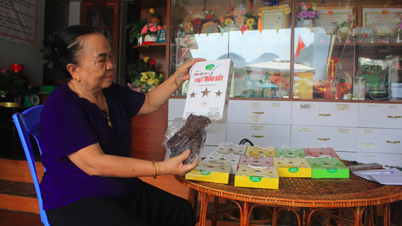

Comment (0)